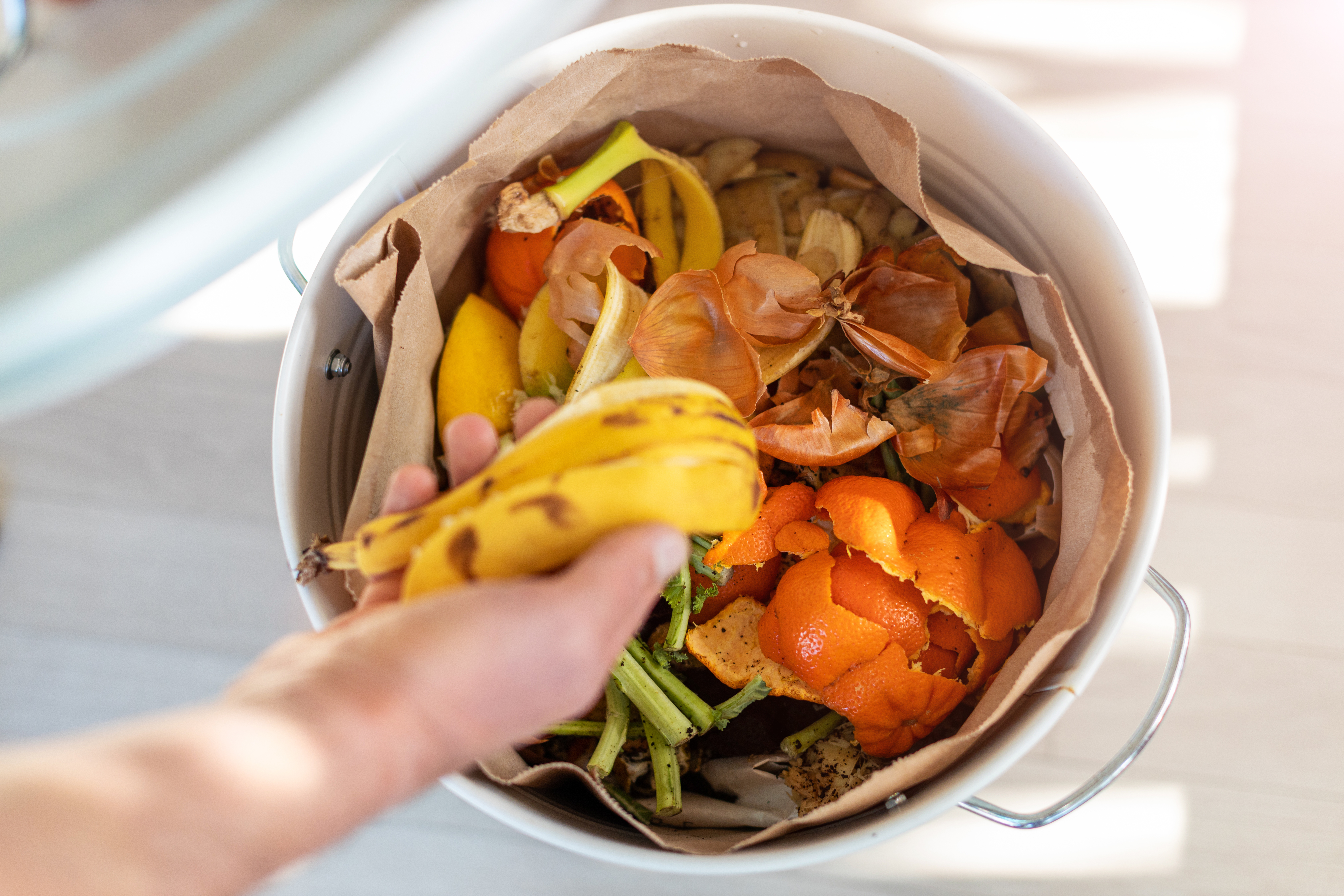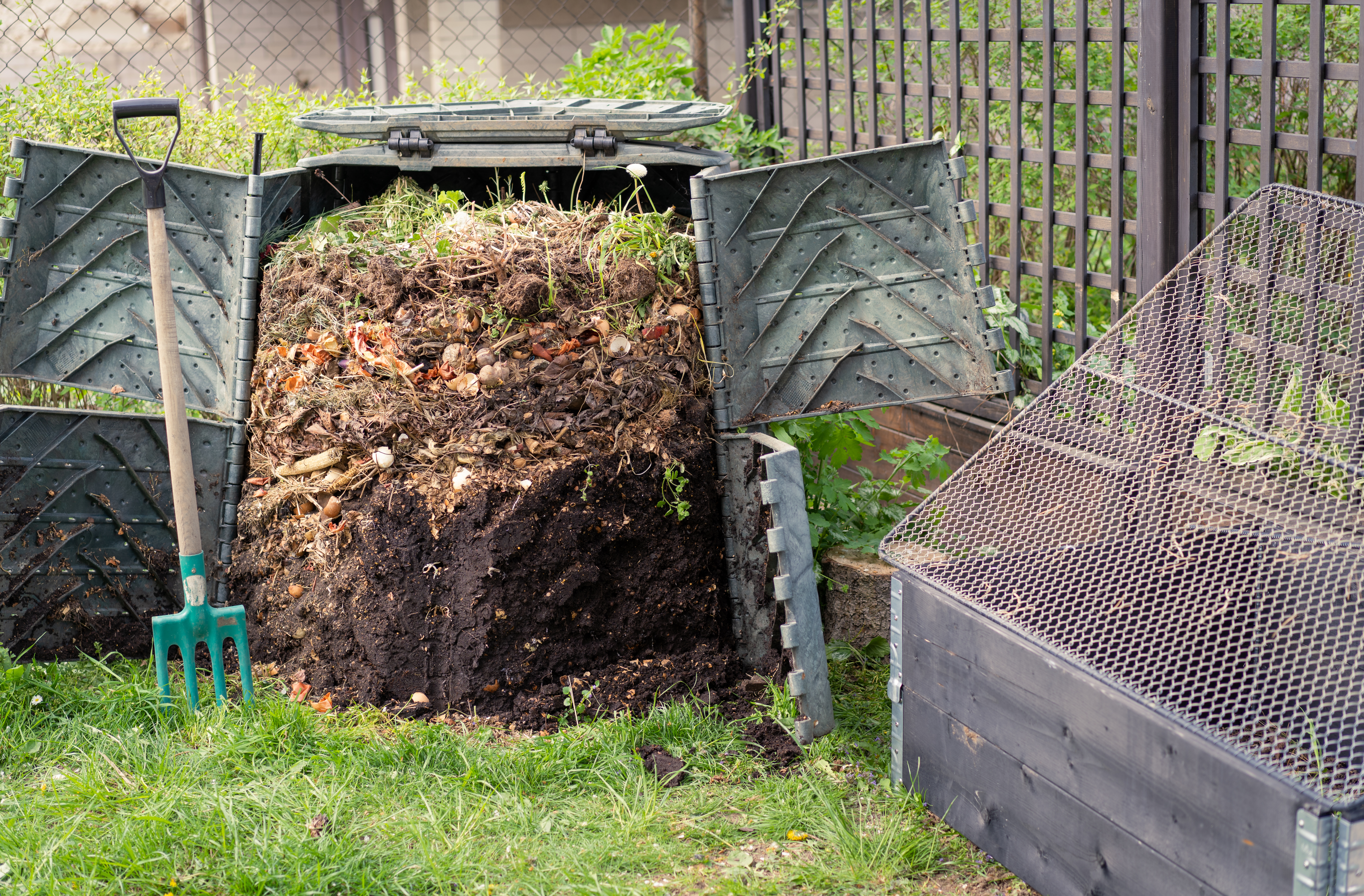Save more of your scraps from landfill and get ready for an impressive garden. Here’s what you need to know to start composting – and why it's important.

Did you know that like humans, plants also have an immune system that gets stronger with good nutrition?
That’s where compost comes in.
Compost is the process whereby organic matter, such as food scraps, decomposes as it gets eaten by billions of microorganisms.
By adding compost to your garden beds – including your vegetable patch – it feeds your soil and plants, and helps your soil retain water. This helps to keep plants healthy and helps protect them from pests and diseases.
Now to ease a common worry: good compost will never smell. If it smells bad, you are doing it wrong. Good compost will look and smell like rich, healthy soil.
The main part of successful composting at home is to look after your microbes and give them a helping hand. So, here's how to do just that and make great compost for your plants:
1. Chop it up
The easy way to get started is by using your kitchen and food waste.
Chop up your kitchen and garden scraps to spread them out in your compost pile, that way, microbes have more access to them.
The more you chop it up, the quicker it will break down. This is also important for stems and woody material.
2. Balance ‘green’ and ‘brown’ materials
Organic material can be categorised as either ‘green’ or ‘brown’.
‘Green’ materials are nitrogen-rich materials including kitchen scraps, fresh garden clippings, hay, manures and coffee grounds. These are mostly broken down by bacteria.
‘Brown’ materials are carbon-rich. These include paper, cardboard, dead leaves, straw, bark and twigs. They are mostly broken down by microscopic fungi.
By feeding both bacteria and fungi, your compost will be full of all the microorganisms your soil and plants need.
The mix of green and brown materials also balances out moisture and helps with air flow so your compost stays smelling nice.
Top tip: You can start a new compost pile by including a good amount of brown materials on the bottom, and layering green on top.
3. Mix it up with different scraps
The more diversity of scraps in your compost, the better your compost will be.
Microbial diversity is one of the most important factors for healthy plants and soil. So, while you can make compost out of lawn clippings alone, finding different things to put in your compost will mean healthier, happier plants.
For instance, you can collect dead leaves and twigs from underneath trees, and combine that with ripped up scrap paper and cardboard. Keep this in a tub next to your compost bin and add some of this ‘brown’ mix when adding kitchen scraps.
Top tip: add in a small amount of soil and finished compost when starting a new pile as they will both add more diversity of microorganisms into your compost.
4. Know what you can compost
You may have heard that you can’t compost citrus, onion skins and eggshells, but you can.
The issue is, they take much longer to break down. As a rule of thumb, a little bit is fine.
Cut and crush these items into small and thin pieces. Do the same for avocado skins and watermelon peel.
If you leave the whole peels, it's not a big deal, but you'll find those things still sitting there when everything else has broken down.
Avocado, peach pips, and corn cobs can be left out, as they take a very long time to break down.
It's best to avoid meat and dairy altogether. These are best left to the commercial composters as they attract a lot of pests. If you really want to compost these at home, check out bokashi composting. The City of Onkaparinga has a good description of this composting method on their website and in this video.
Top tip: If you're unsure, there are plenty of tips on the Which Bin? website on what you can compost and whether your council collects other scraps in your green bin.
5. Water it
If your compost dries out, your microbes will go dormant or die, and nothing will break down.
So make sure you keep your compost moist but not too wet.
Top tip: As a rule of thumb, if you grabbed a handful of compost and tightly squeezed it, you should see some drops form between your fingers but not drip down your hand.
6. Turn it
You should aim to turn your compost every 2 to 3 weeks. Turning your compost is important for a lot of reasons. Some of the microbes in compost need oxygen to live, so turning it helps keep them alive and happy.
The microbes that live without oxygen are the ones that create all the bad smells. So, if your compost smells, it means there isn’t enough oxygen and you need to turn it more.
Turning your pile will also help everything break down much quicker. When you turn, you will help mix the fresh scraps in with the beautiful dark brown compost already formed at the bottom of your pile, which is full of more hungry microbes.
To turn the compost, you will need a compost turner. It’s like a giant corkscrew that you twist down into the pile and then lift up, bringing everything from the bottom up to the top and mixing it all.
As long as you have followed step one ‘chop it up’, you will find your compost is easy to turn.
Finally, turning your pile is the easiest way to see if you have enough moisture and to say hello to your earthworms.

7. Rest
Good compost takes time to mature. At some point you will need to rest your compost and stop adding new things to it.
Having 2 compost bins will help with this. Once one bin gets full, leave it to rest for a few months while you start the next one. Once that bin is full, the first bin will be ready to use in your garden.
Top tip: In case you're wondering, you don’t need to buy worms or add them to your compost – so long as you are using an open bottom compost bin, they will naturally come. They also don't like being tumbled so best not add them to your compost tumbler if you have one.
8. Feed your plants
Once your compost has had time to mature and is ready to use, it should be a beautiful dark brown colour and you shouldn’t recognise anything except for some hard to breakdown things, like woodchips and eggshells.
Some people like to sift their compost to get rid of these chunky bits, but you really don’t have to – you can just use it as is.
The most common way compost is used is when preparing the soil to plant new plants. You might like to put a handful of compost in the root zone (where roots will grow) when planting seedlings, or include compost in a new garden bed before planting.
You also might like to mix some compost in with potting mix when potting plants, or use it in a seed-raising mix.
For established plants, you can put some compost on the soil surface around the base of the plants and cover with a mulch like pea straw so it doesn’t dry out.
Be careful not to put compost right up against the stem of your plant as it can retain too much water and may cause the stem to rot.
Just beginning your food gardening journey? Head to our gardening hub for more tips and tricks.